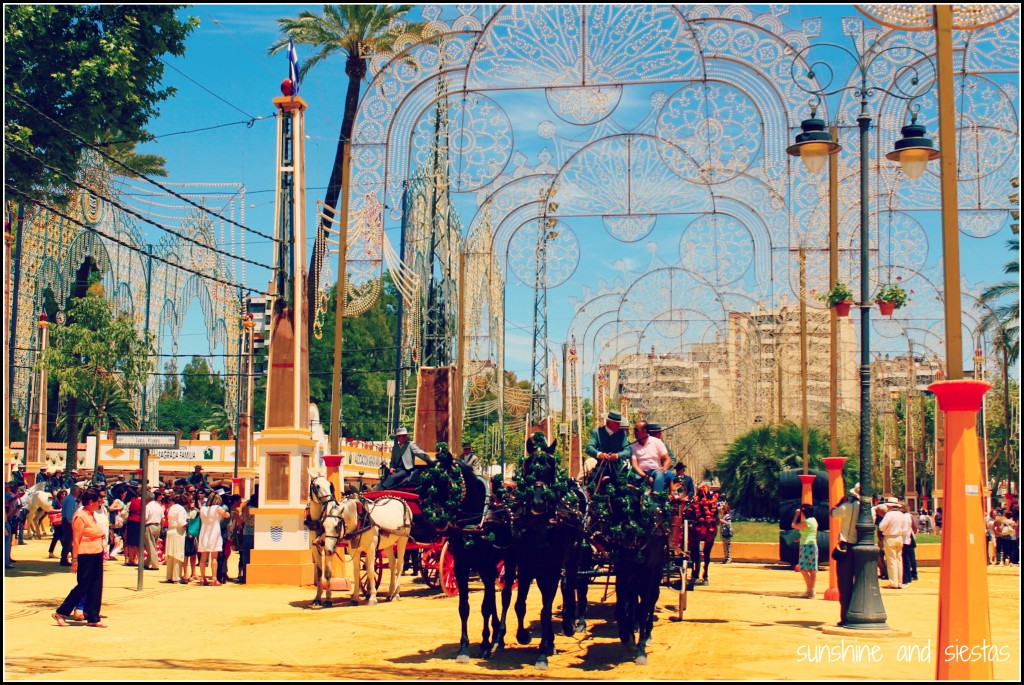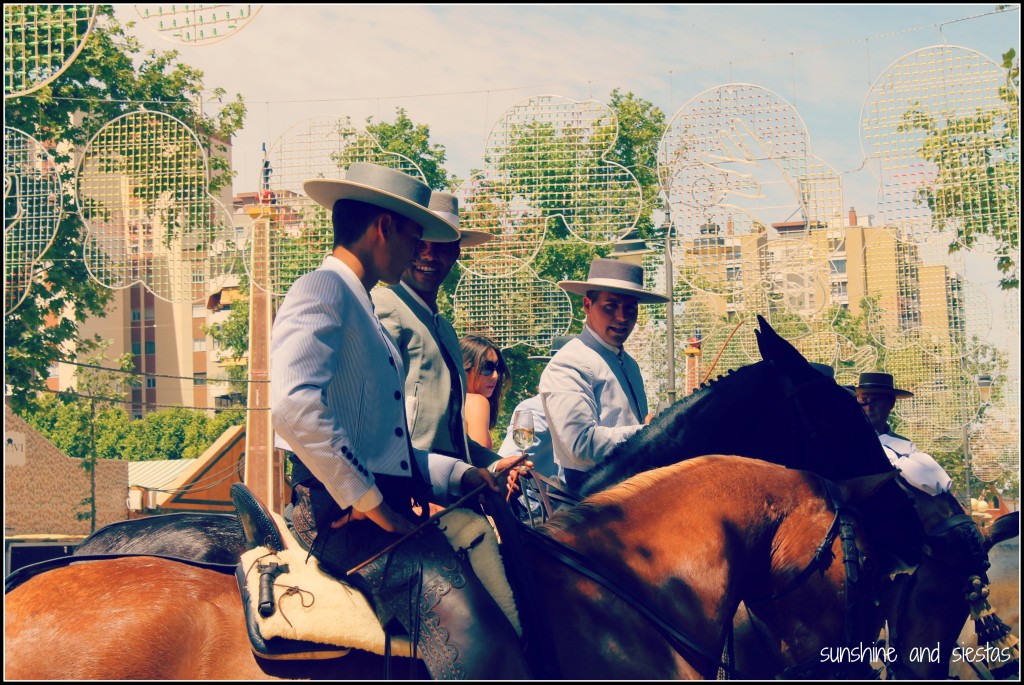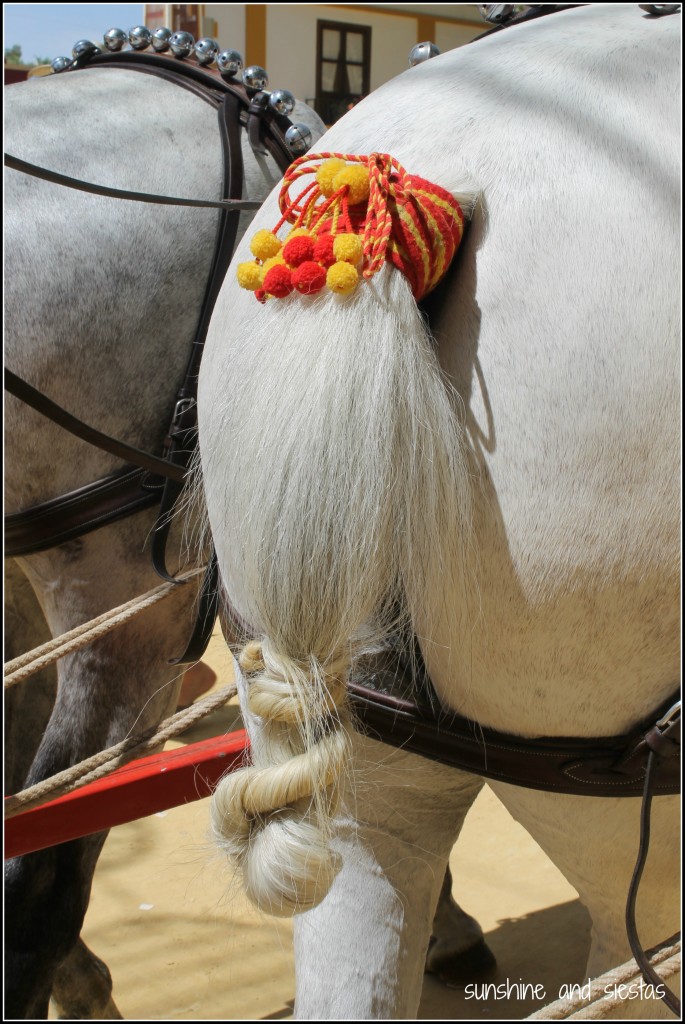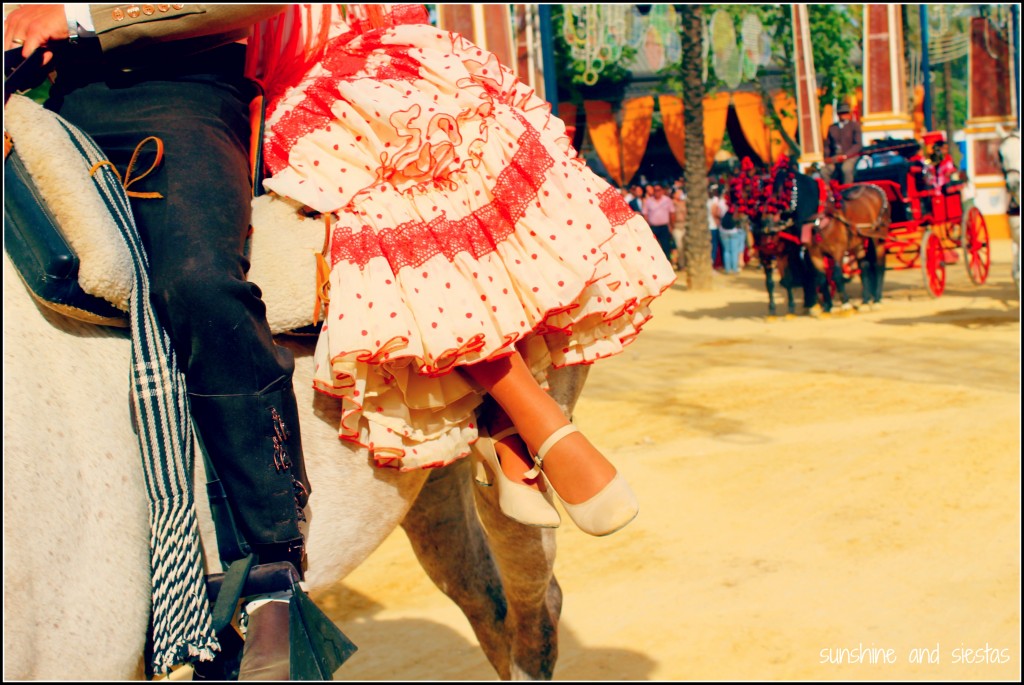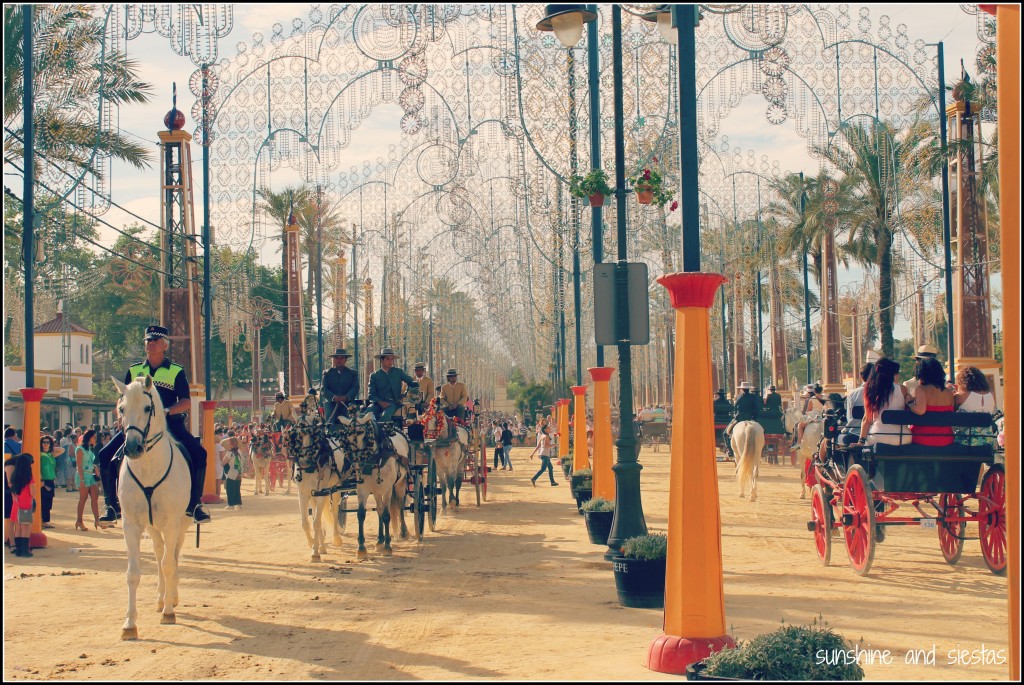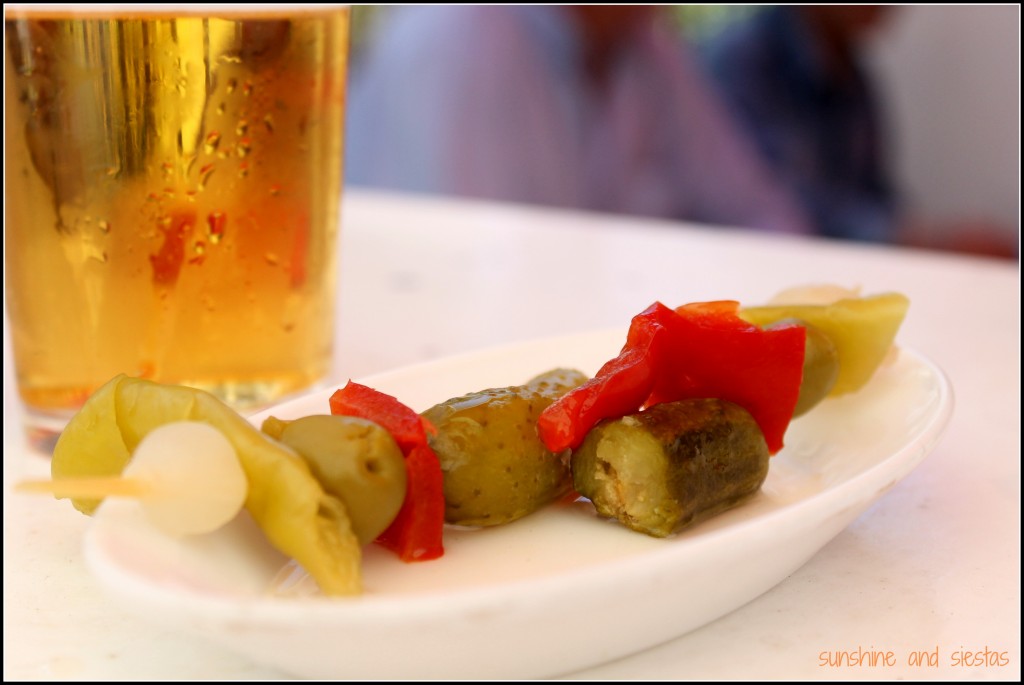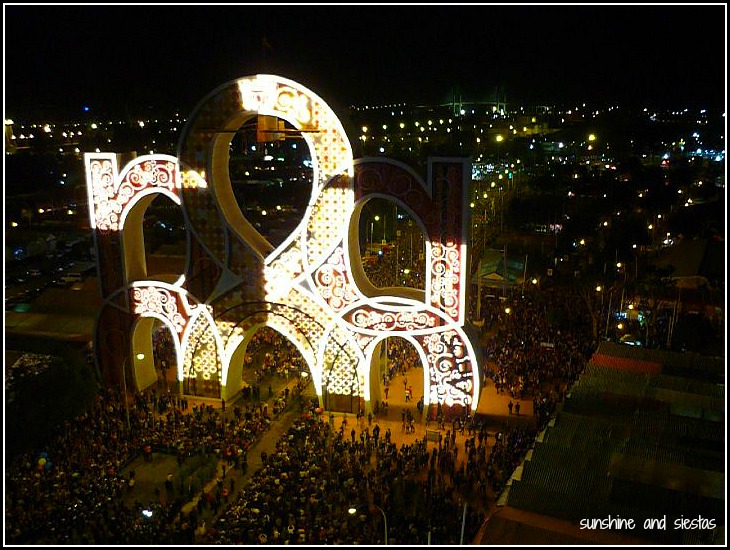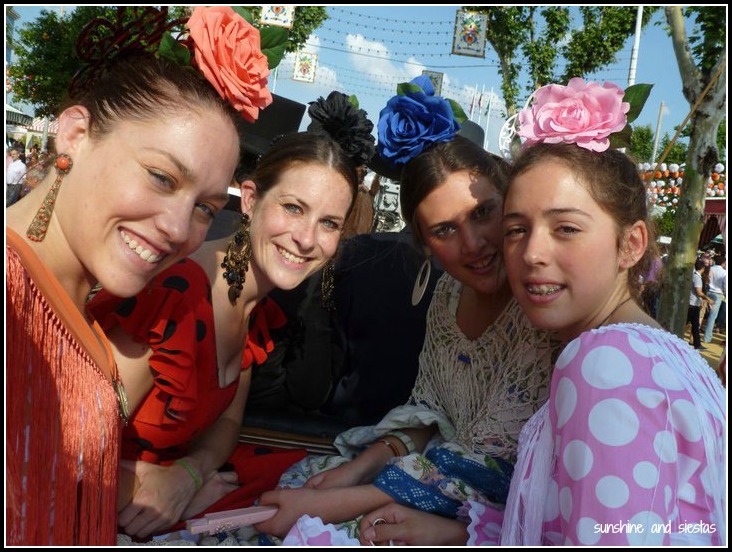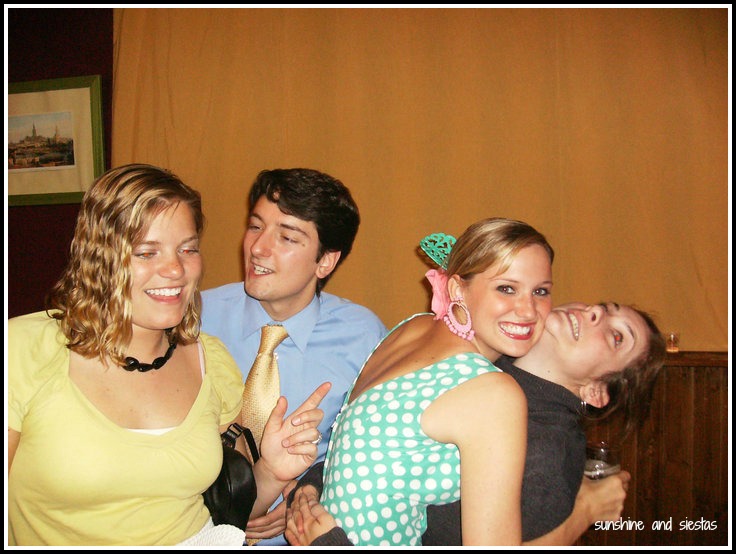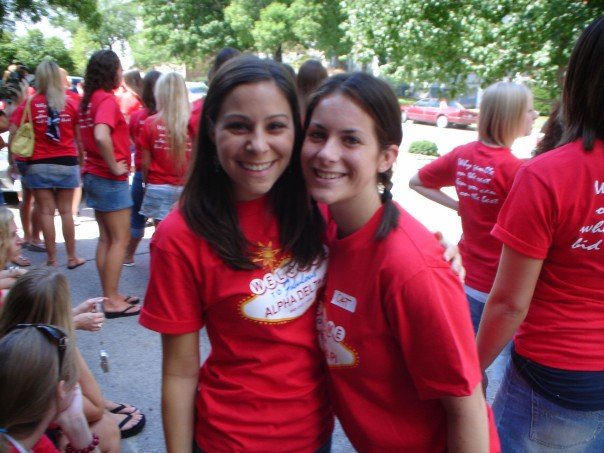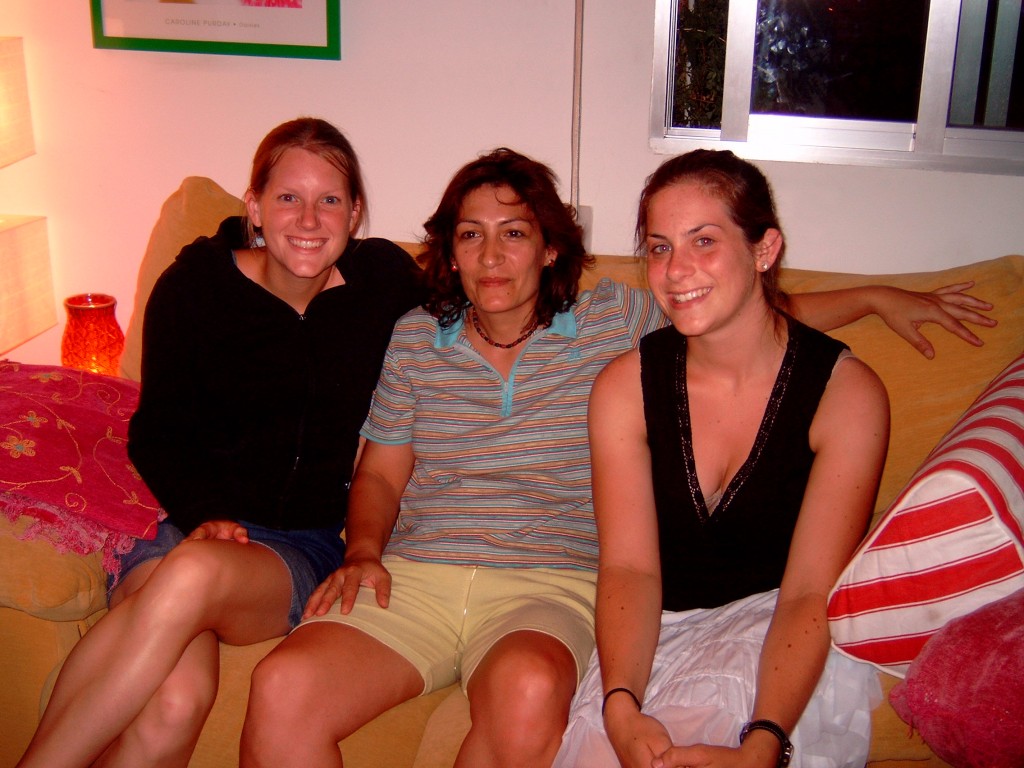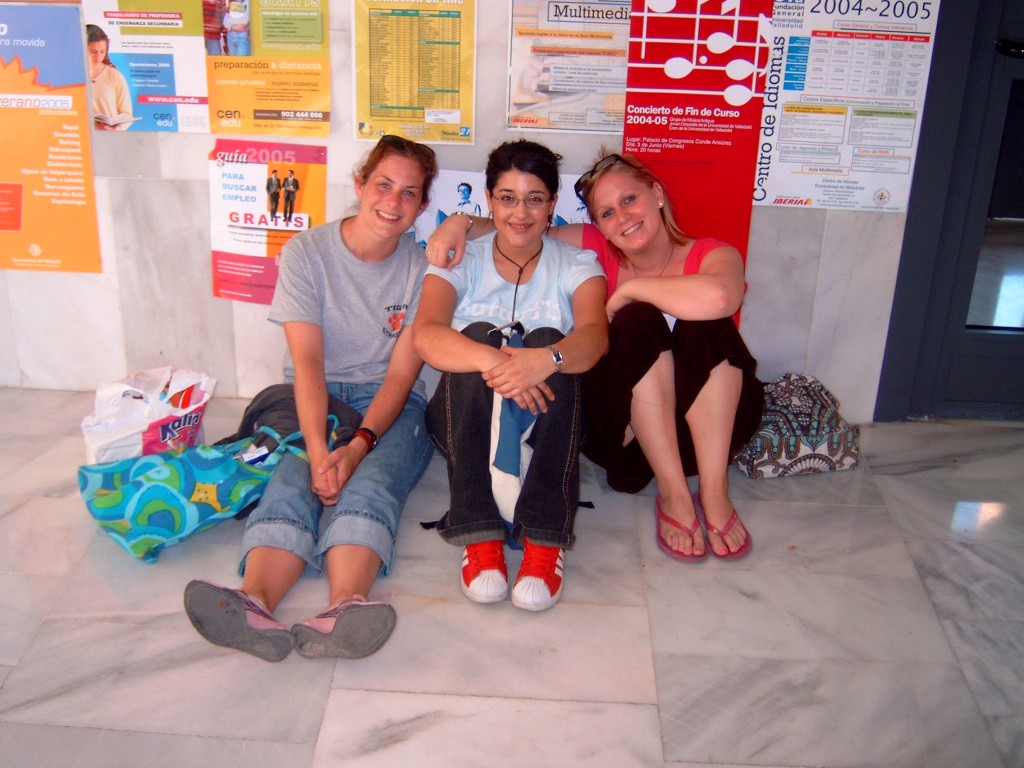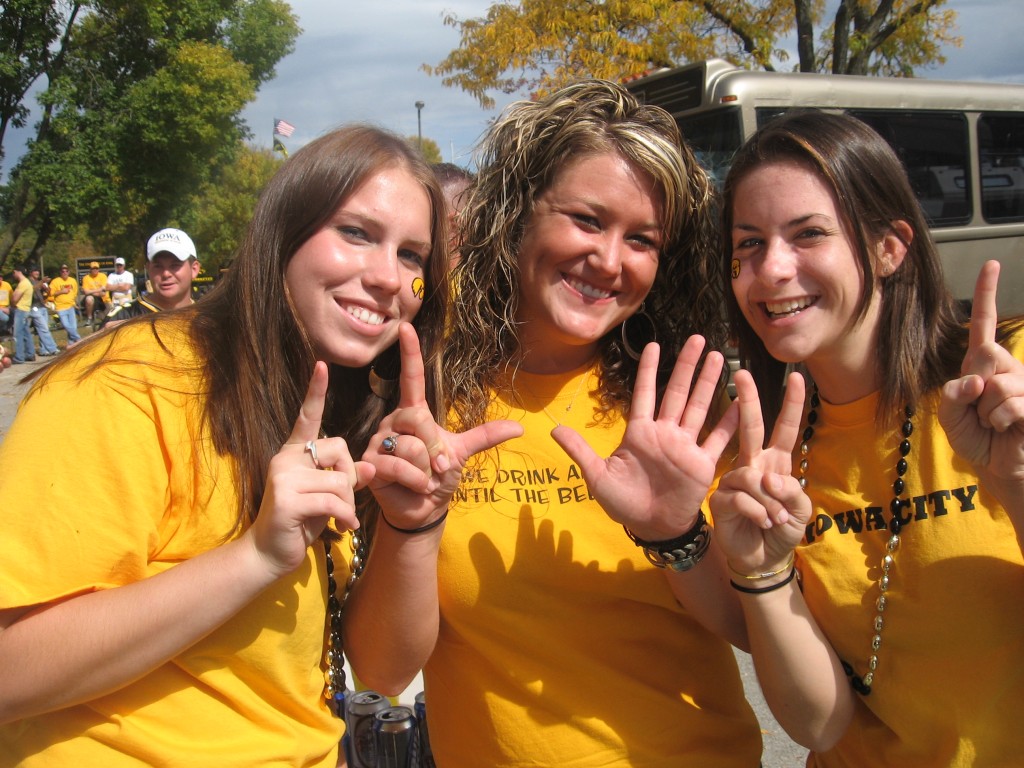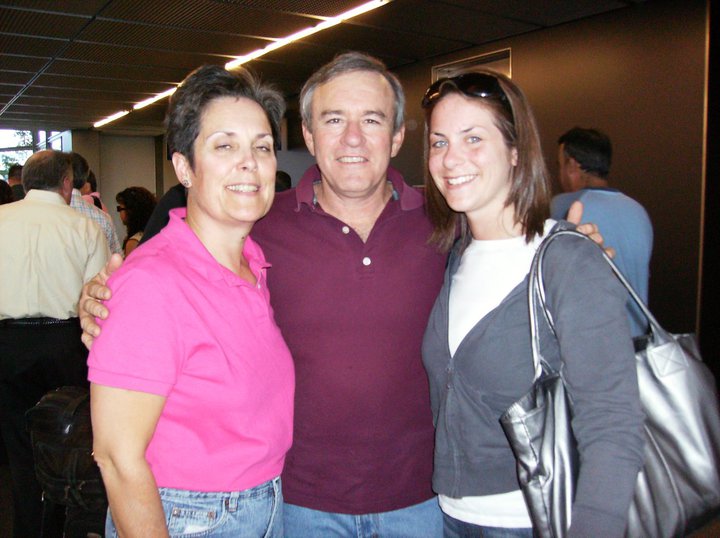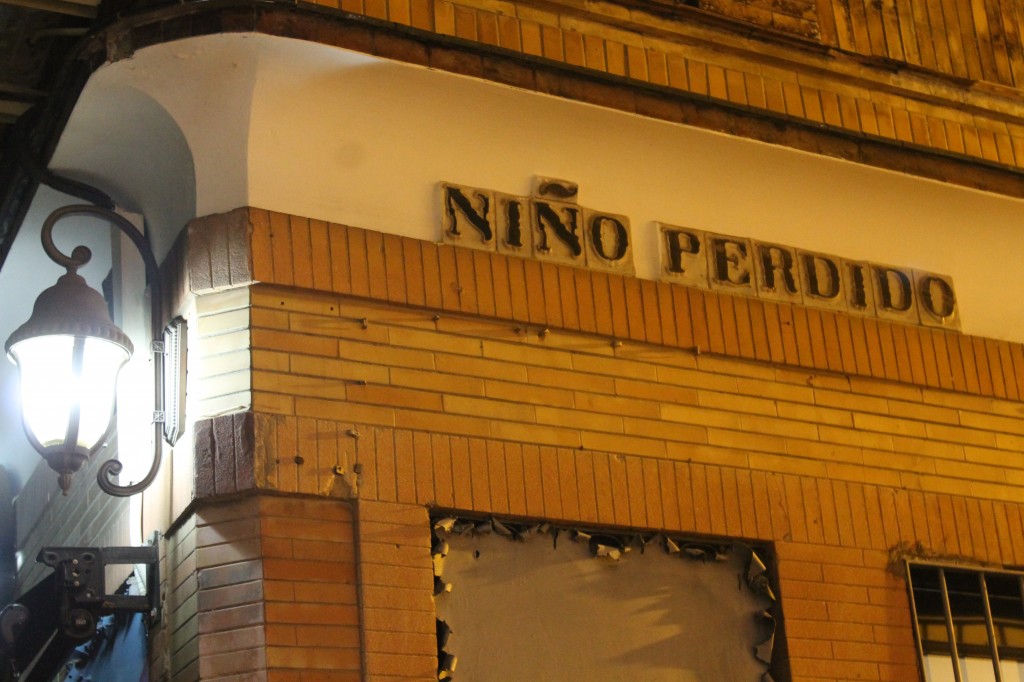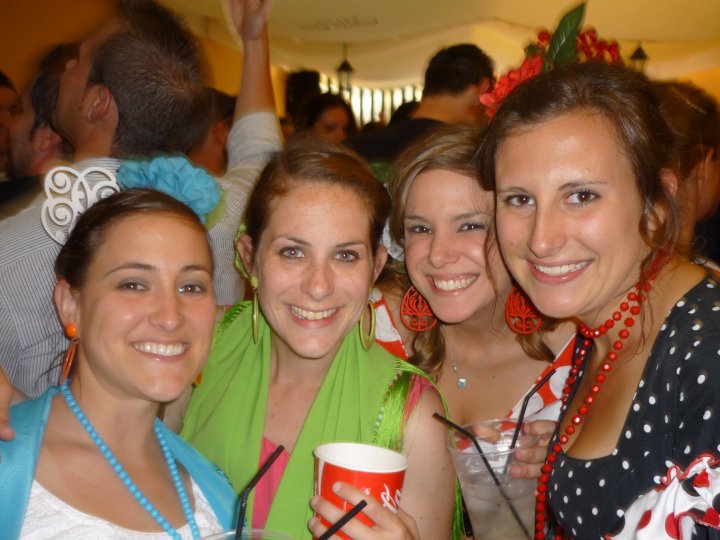Call me a purist, but I love Seville’s April Fair, classism and all. Friends of mine had always talked about the jerezano equivalent, held a few weeks after Seville’s famed fête in mid May. Last year, M and I took the train to nearby Jerez de la Frontera for a day to experience the festival.
Being a celebrated horse breeding and training city, el caballo takes center stage at the fair, with both exhibitions and a horse auction. The biggest difference between the two is that the streets aren’t choked with horse carriages, so there’s less of a chance you’ll get hit by one or drag your dress through horse poop.
But there was plenty more: Jerez’s fair was a fun mix of eclectic and traditional casetas (we danced in a caseta run by a biker bar and drank margaritas at the Mexican restaurant’s tent), many different types of music, and much more wallet friendly. Not having to worry about appearances, we could just enjoy ourselves with all of the adorable, sherry-drinking abuelos.
Not much can hold a candle to Seville’s fair, but Jerez is as damn close as you can get.
If you go: The Feria de Jerez is held over seven days in May, typically during the second week of the month (this year’s festival is the 11th – 18th of May). You can take the train from Seville’s Santa Justa or San Bernardo stations straight to Jerez, with a round-trip ticket costing 17€. Entrance to the fairgrounds in Jerez is free. For more information, check the city’s festivals page.
Have you been to any Andalusian fairs?
